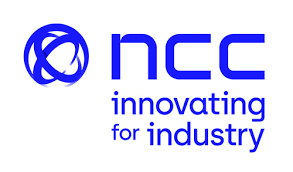
Posted: 20th October, 2025
Overview
NCC, a world-leading innovation organisation based in the UK, engaged Wi-Net Connect to perform a full Wireless Network Health Audit across its site. With operations spanning advanced laboratories, large-scale production halls, offices, conference spaces, and outdoor areas, NCC required a detailed understanding of how its wireless network was performing and a clear roadmap for improvement.
The Challenge
NCC’s wireless infrastructure had grown over time and, while it provided basic coverage, there were signs that the network was beginning to fall short in critical areas. Some production zones and office spaces were experiencing patchy coverage and reduced capacity, while outdoor and rooftop areas had little to no usable signal. The access point (AP) installation quality also varied across the site, with many units mounted on walls or close to obstructions, a legacy of coverage-only design principles.
Our Approach
Wi-Net Connect carried out a comprehensive wireless audit using Ekahau Sidekick 2 for surveying and spectrum analysis, alongside packet-level diagnostics and configuration review. Every access point across the site was catalogued, photographed, and assessed against best-practice installation standards.
Heatmaps and capacity simulations were generated for each floor and operational zone, modelling how the network performed under real-world usage scenarios such as high-density meetings or open-day events. Spectrum analysis was also conducted to identify sources of interference, particularly on the heavily congested 2.4 GHz band.
Findings & Recommendations
The audit revealed that while basic coverage requirements were being met in many areas, secondary coverage and capacity were lacking due to the wide spacing of APs. This resulted in oversized cells, sticky client behaviour, and limited redundancy in the event of AP failure.
Additional critical AP locations have been recommended to address coverage gaps across labs, offices, and outdoor spaces, and to improve capacity in high-density working areas.
We also identified a number of installation issues. Most APs were mounted on walls like clocks rather than facing downward from the ceiling. Relocating APs to ceiling or tray work, clear of obstructions, and orientating them correctly would improve performance significantly.
No major non-Wi-Fi interferers were detected on the 5 GHz band, but interference from IoT devices and cameras was observed on 2.4 GHz. As such, we advised that 2.4 GHz should remain a best-effort service, with the primary focus on optimising the 5 GHz and preparing for 6 GHz capability.
Finally, we recommended that NCC begin planning to migrate to next-generation Wi-Fi 6E or Wi-Fi 7 infrastructure, ensuring long-term scalability, resilience, and enhanced performance.
Outcome
The audit provided NCC with a clear, actionable roadmap for modernising its wireless network. By addressing immediate coverage and capacity gaps while planning for a phased migration to next-generation infrastructure, NCC is well-positioned to continue supporting the cutting-edge research and innovation it is renowned for, underpinned by a wireless network that is reliable, scalable, and future-proof.
Testimonial
“Simon from Wi-Net Connect conducted a comprehensive Wi-Fi site survey, using advanced tools to measure signal strength, interference, and coverage gaps.
The heatmaps and diagnostics revealed key areas for improvement, and his recommendations — from AP placement to channel optimization — were spot-on.
Simon’s professionalism and technical depth made the entire process seamless.”
James Murton
Security and Networking Manager | NCC